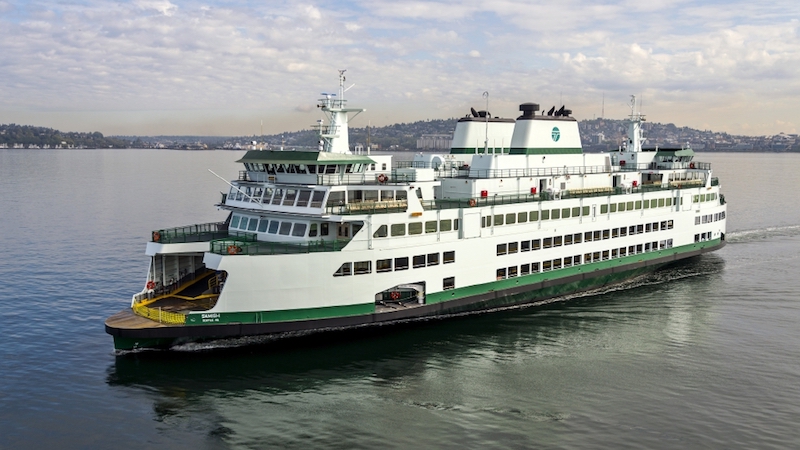Elliott Bay Design Group (EBDG) announced today that it has been chosen by Vigor Fab LLC to provide functional design for the new hybrid-electric Olympic-class ferries for Washington State Ferries (WSF).
Seattle-based EBDG will be responsible for redesigning the vessels to accommodate the major change in propulsion type without disrupting structural components. The ferries will operate on all-battery power during crossings or can revert to a hybrid, diesel-electric propulsion. Battery recharging will typically occur dockside at the terminals during offloading/loading procedures. The first vessel is expected to be the largest newbuild battery-powered ferry in North America.
Earlier this year, the Washington state Legislature authorized a contract extension for Vigor to build up to five hybrid-electric versions of their 144-vehicle Olympic class. The newbuild authorization is a direct result of the 2040 Long Range Plan that identified the initial aspects of vessel and terminal electrification. EBDG was a participant in the plan and is now leading the effort for an additional, supporting addendum – the WSF System Electrification Plan. This plan will identify a detailed plan for deploying hybrid-electric vessels throughout the ferry system, EDBG said.
EBDG has performed design work on the last 20 vessels built for WSF and has been a major contributor to WSF's electrification efforts by supporting hybrid feasibility studies and lifecycle cost analyses for both the Jumbo Mark II and Olympic-class ferries. "We have supported WSF with naval architecture and engineering support since 1992," Brian King, president of Elliott Bay Design Group, said in a statement. "Our involvement in the hybridization of the ferries is a natural progression that we are immensely proud to be a part of," King reflects.
WSF operates the largest ferry system in the U.S., with 23 vessels, 20 terminals and 23 million passengers. The new ferry will utilize hybrid-electric propulsion, tapping clean Northwest hydropower. Construction is expected to begin in 2020 with delivery of the first vessel in late 2022.




